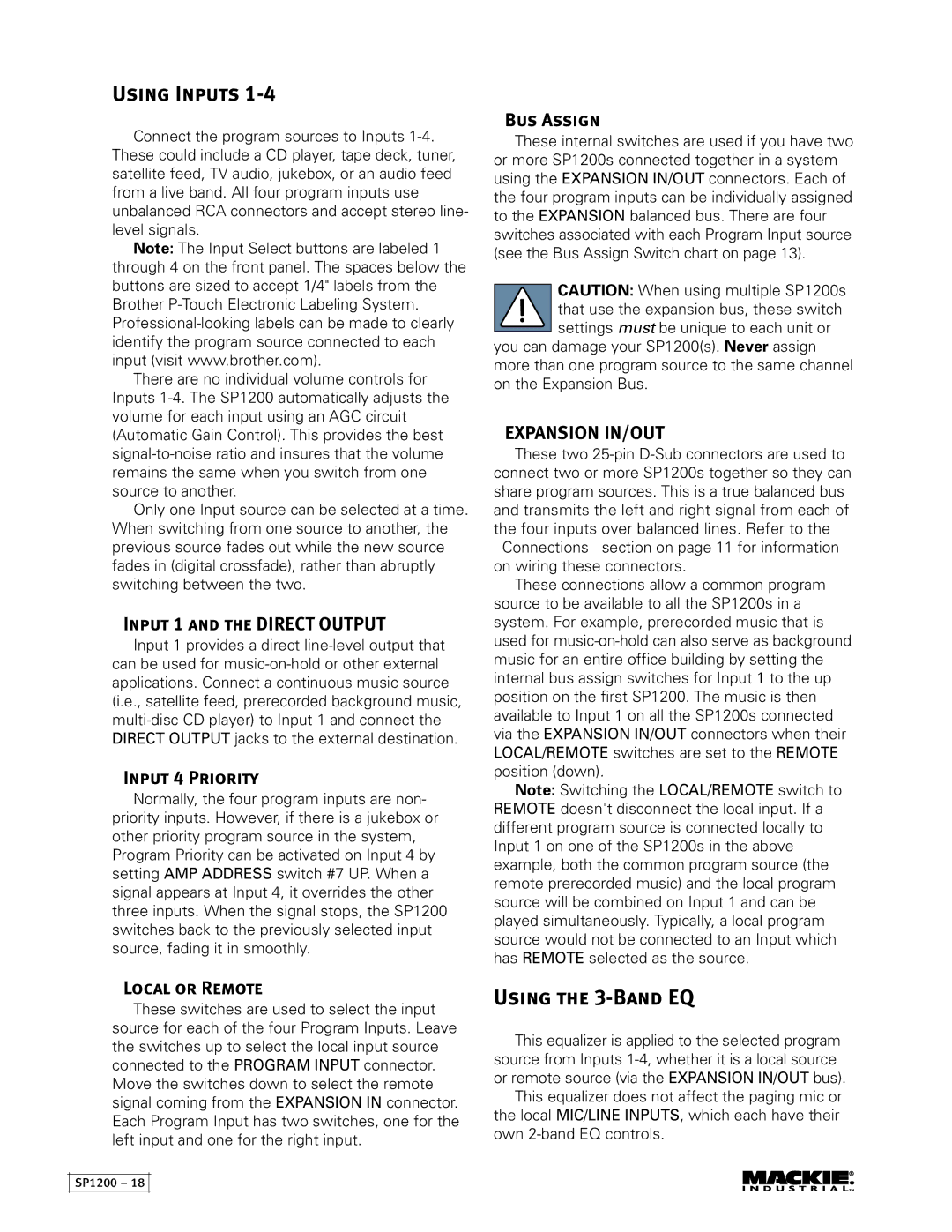
Using Inputs 1-4
Connect the program sources to Inputs
These could include a CD player, tape deck, tuner, satellite feed, TV audio, jukebox, or an audio feed from a live band. All four program inputs use unbalanced RCA connectors and accept stereo line- level signals.
Note: The Input Select buttons are labeled 1 through 4 on the front panel. The spaces below the buttons are sized to accept 1/4" labels from the Brother
There are no individual volume controls for
Inputs
Only one Input source can be selected at a time. When switching from one source to another, the previous source fades out while the new source fades in (digital crossfade), rather than abruptly switching between the two.
Input 1 and the DIRECT OUTPUT
Input 1 provides a direct
Input 4 Priority
Normally, the four program inputs are non- priority inputs. However, if there is a jukebox or other priority program source in the system, Program Priority can be activated on Input 4 by setting AMP ADDRESS switch #7 UP. When a signal appears at Input 4, it overrides the other three inputs. When the signal stops, the SP1200 switches back to the previously selected input source, fading it in smoothly.
Bus Assign
These internal switches are used if you have two or more SP1200s connected together in a system using the EXPANSION IN/OUT connectors. Each of the four program inputs can be individually assigned to the EXPANSION balanced bus. There are four switches associated with each Program Input source (see the Bus Assign Switch chart on page 13).
CAUTION: When using multiple SP1200s that use the expansion bus, these switch
settings must be unique to each unit or you can damage your SP1200(s). Never assign more than one program source to the same channel on the Expansion Bus.
EXPANSION IN/OUT
These two
These connections allow a common program source to be available to all the SP1200s in a system. For example, prerecorded music that is used for
Note: Switching the LOCAL/REMOTE switch to REMOTE doesn't disconnect the local input. If a different program source is connected locally to Input 1 on one of the SP1200s in the above example, both the common program source (the remote prerecorded music) and the local program source will be combined on Input 1 and can be played simultaneously. Typically, a local program source would not be connected to an Input which has REMOTE selected as the source.
Local or Remote
These switches are used to select the input
source for each of the four Program Inputs. Leave the switches up to select the local input source connected to the PROGRAM INPUT connector. Move the switches down to select the remote signal coming from the EXPANSION IN connector. Each Program Input has two switches, one for the left input and one for the right input.
SP1200 – 18
Using the 3-Band EQ
This equalizer is applied to the selected program source from Inputs
own
